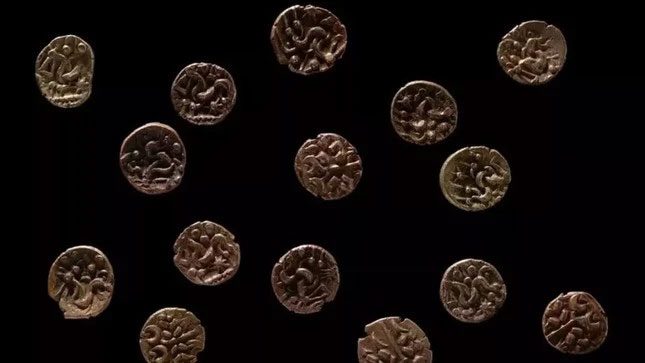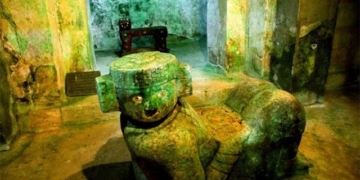Metal detectors have uncovered a hoard of gold coins scattered across an open field in Anglesey, an island in Wales, marking the first discovery of Iron Age currency in this country.

15 well-preserved coins, minted around 60 BC to 20 BC, are known as staters, a common currency in ancient Greece.
These coins are derived from the gold coins of Macedon, specifically from Philip II, who was the king of the ancient Kingdom of Macedon. The front of the coins features a bust of the Greek god Apollo, crowned with a wreath, while the reverse depicts a two-horse chariot with a driver.
These gold coins may have been used by the Corieltavi tribe, who inhabited the area during the Iron Age.
After gradually discovering the coins from July 2021 to March 2022, the metal detectors reported their findings to the Portable Antiquities Scheme, an organization managed by the British Museum and the Museum of Wales. Recently, authorities officially announced the discovery of a “treasure.”
Lloyd Roberts, one of the metal detectors, stated: “Finding metal has always been at the top of my wish list. We are thrilled to discover that this is the first Iron Age gold hoard ever found in Wales.”
Although experts from the Gwynedd Archaeological Trust, an organization providing archaeological services in Wales, are unsure how the coins ended up in the field, they know that they were minted at three different mints in Lincolnshire, a county in present-day England.
The discovery of coins from this period in Wales is extremely rare because Iron Age tribes in the area typically did not use external currency. Previous studies suggest that this island was a “significant religious center” from the 1st century BC to the 1st century AD. Experts believe these coins may have been used as offerings to the gods.
This collection of coins will be displayed at Oriel Môn, a museum and gallery in Anglesey, Wales.


















































